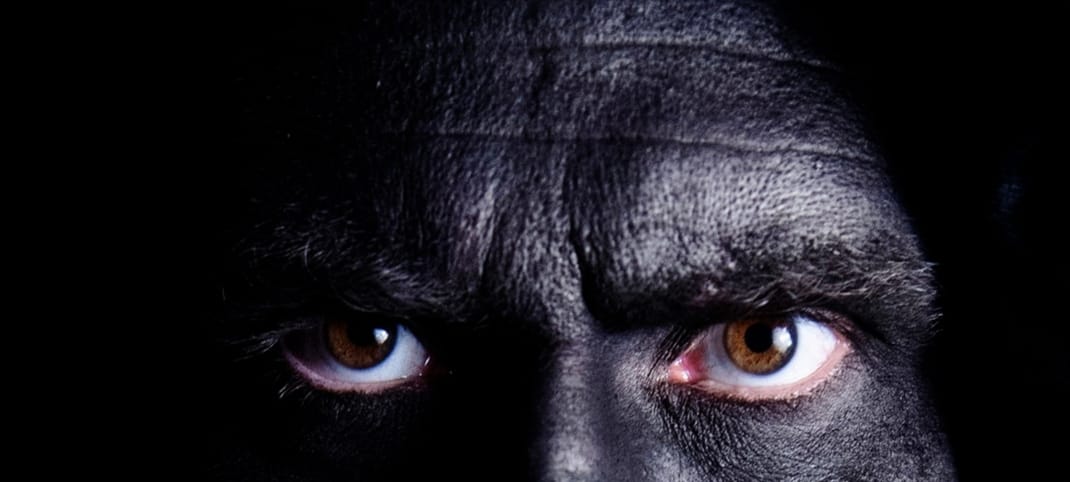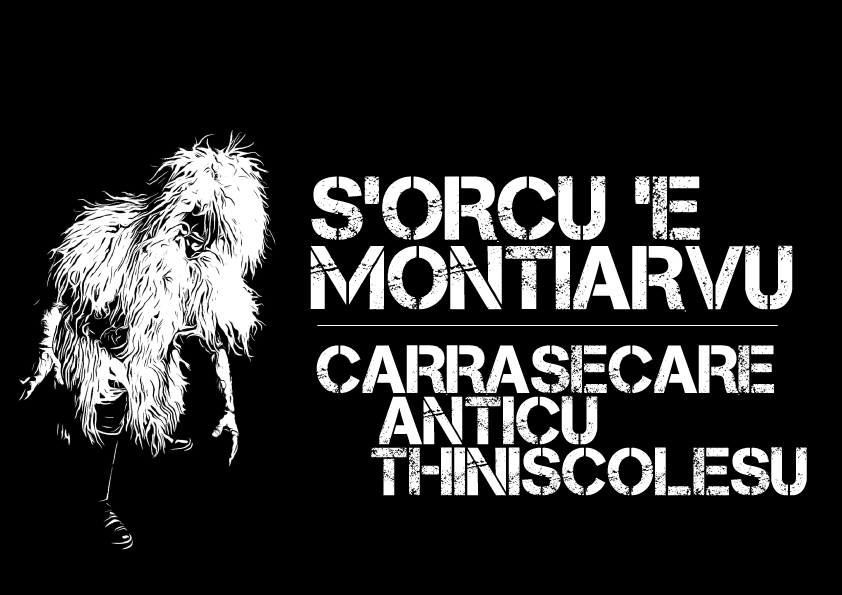About S’Orcu ’e Montiarvu – The Ancient Carnival of Siniscola
In ancient times, 1500 years B.C., the thread of life was closely linked to nature. The Great Mediterranean Mother, free to give or take away nourishment to men, children and animals.
To please Dionysus, God of fertility, men began to sacrifice animals with rites linked to the natural world, in order to avert drought with blood sacrifices dedicated to the earth. An ancient land, made up of limestone, oak forests and wild olive trees, where we still find signs of an ancient history that is still alive today. And as pain is part of death, so birth sows the seed for another life.
From this intersection of souls, rattles, whips, sticks, blood and soot originates the Ancient Carnival of Siniscola.
———————————————————————————
The rediscovery, reading, research, and in-depth study—these were the elements that, years ago, led to the formation of the Orcu ‘e Montiarvu association. An association structured to encompass the expression of history, customs, toponyms, and the Sardinian language, through the representation of ancient pagan rites linked to the agricultural world in use in the town of Siniscola, lost in a time not too distant.
Agricultural rites find temporal placement in their seasonal representation: Carnival/Carrasecare/Carre de secare/Carne da tagliare/Carne viva da fare a pezzi, lacerare. Sa Carre differs from Sa Petha, understood as common meat for consumption, and the etymology of the name itself introduces us to gruesome and grotesque content. We could almost speak of zoonosis, the famous leap of the animal into man, which continues in its representation of a tragic world, in the role of the sacrificial victim and all the mournful part that follows.
It is the representation of the god himself, Dionysus, the dark side of Bacchus, who had to be born and die every year in the same way as the grass in the fields or like wheat, first sown and then reaped, in a repeated and infinitely circular cycle of nature, fulfilled through the ritual of Su Carrasecare Anticu Thiniscolesu.
The narrative spans moments from the capture to the passion of the sacrificial victim, the beast, de s’Orcu, through a bloody and vehement path that leads to its capitulation, with blood left to flow to fertilize the earth in a propitiatory rite. Within it, we also find numerous symbols and apotropaic elements such as the sound of the bells of the performers, to shake the earth with the intention of waking it from lethargy, or funeral laments, sos atitos, and numerous calls deeply linked to the rebirth of nature.
A representation that stems from a thorough investigation of one’s own roots, of almost mythological figures belonging to our ancestors. Figures that try to carve out a space in a contemporary Sardinian world that has marginalized the customs of the past to make room for the hyperconsumer technological era.
It is in this deep connection between our association and the land, which is also ours because we inhabit it, that the decision arises to show ourselves only twice a year: the first on the day of Su ‘Olòne, the bonfire of Sant’Antonio in January, and the second in February for Carnival, on the climax day of Su Carrasecare Anticu Thiniscolesu.
A decision that coherently relates to the tradition of Sardinian masks, which in the past strictly appeared on these two dates that introduced the spring and the completion of the agricultural year, without the perverse tourist or experiential genuflections so fashionable today.
A search that never stops progressing day by day, year by year, which has led our association to become the exclusive creator with its masks: S’Orcu ‘e Montiarvu, Su Guardianu ‘e S’Orcu, Su Tintinnàtu, Su Voe Jacu e Sa Partorja, de Su Carrasecare Anticu Thiniscolesu..


